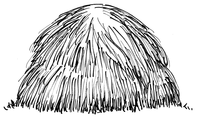The Crux of the Cross
Dear old and new friends,
This time of the year a bare wooden cross perhaps draped with purple cloth is the central image in Protestant churches, while in Catholic ones it is a cross with the dead Jesus on it—a crucifix. Both of these crosses present us with a crux, a problem. Historically during Christianity’s first thousand years neither one of these crosses was seen! In place of the cross of death, a cross of the victory of life over death, a beautiful artwork in silver or gold, embedded with jewels and precious stones, was venerated.
The crux of the cross is that art images have enormous influencing power, or they once did. Today our eyes are numbed blind to images, their power diluted because we are daily saturated in a tsunami of images on television, in magazines and newspapers. It has been said that we now see in a day, or even in a few hours, more images than someone in the 12th century saw in their entire lifetime! To see an image of art then required being inside a church, whose walls offered fresco painted images that taught the viewer theology, scripture and the splendor of the resurrection.
The last decades of the first millennium a new religious image appeared. The earliest surviving crucifix is the Gero Cross of 970 which is a carved oak, full life-size image of the dead Jesus nailed to a cross. Rapidly, such life-size crucifixes spread across Europe becoming increasingly more and more grotesque and bloody. The Emperor Charlemagne then decreed these full-scale crucifixes be placed at the center of all worship places in an effort to unify his kingdom by convincingly converting his Saxon subjects baptized by the sword (Of note: Zealous Charlemagne also decreed that anyone who ate meat in Lent merited the death sentence!)
These new crucifixes proclaimed a new spirituality of suffering, death and a fear of hell, and asked the logical question, “Who was responsible for this horrendous crime?” Preachers provided the answer using fiery, agonizing images of hell. “You Saxons are guilty! You have murdered the Lord of Life by your sins!” That guilt-laden explanation lingers in today’s sermons and pious devotion, and it haunts with culpability those who looked upon crucifixes. Words from authority figures appear toothless, yet all words are living art images possessing incredible power, especially when repeated over and over and over, which is the secret of propaganda.
In 1095 Pope Urban II initiated the First Crusade, calling European warriors to take up the sword and wear the cross as their symbol to wage a holy war against Islamic forces holding Jerusalem, and against all unbelievers. The pope commissioned Peter the Hermit to preach the Crusade through France and Germany. His preaching on Good Friday in Cologne, Germany called upon the crusaders to force Jews to repent of murdering Christ and accept baptism at the point of the sword. Cologne’s subsequent slaughter of Jewish men, women and children was the first Christian pogrom against Jews. It is estimated that before turning east to the Holy Land the Crusaders killed approximately ten thousand Jews in Germany alone, where previously for centuries Jews and Christians had lived peacefully side by side. Peter’s diatribe of vicious hate speech against the Jewish people spread quickly across Europe, repeated by other preachers who created exaggerated bloody, gruesome accounts of Jesus’ death. The Jews had now replaced Christians and their sins as the new culprits guilty of Christ’s death.
Instead of the cross as a symbol of Christ’s sacrifice for our sins, or of him as the scapegoat carrying humanity’s sins away to his death, recall that God is love. As the Spirit drove Jesus into the desert so the Spirit of Love drove him to Calvary’s cross. The cross isn’t about sin or guilt, but about God’s love. The theologian Hans Urs von Balthasar says the first crucifixion took place in the heart of God as a total self-emptying in unconditional love to become one with all humanity and creation. That first crucifixion showed the helplessness and vulnerability of God’s love. The cross is an Icon-image of evolution where suffering and death are essential for the birth of new life. Theologian Ilia Delio says that the cross is about the wildness of Divine Love that’s stronger than death. Sadly, we eclipse its atomic energy by domesticating it when we use it as a decoration and by a lack of prayerful awareness when making the Sign of the Cross on ourselves. An old Russian saying is that you can tell the depth of faith of another by how she or he makes the sign of the cross.
In this reflection we have also considered the power of words like those used in hate speech towards the Jews. Words are more than just sounds. Words create vibrant living art images in the mind. Words like weapons can kill and injure, so our Teacher taught us derogatory remarks about others are equal to murder and merit the fires of Gehenna. The many centuries of insulting Jews by hate speech and derogatory jokes led ultimately to the deaths of millions in the Nazi Holocaust. Be vigilant of your words. Beware of echoing those whose vivid speech condemns abortion. Wash out your ears after hearing anti-Muslim, anti-police, anti-immigration and anti-racial black or white speech. When tempted to use any negative speech, pause and then obscurely make on your closed lips a small sign of the cross.


 RSS Feed
RSS Feed